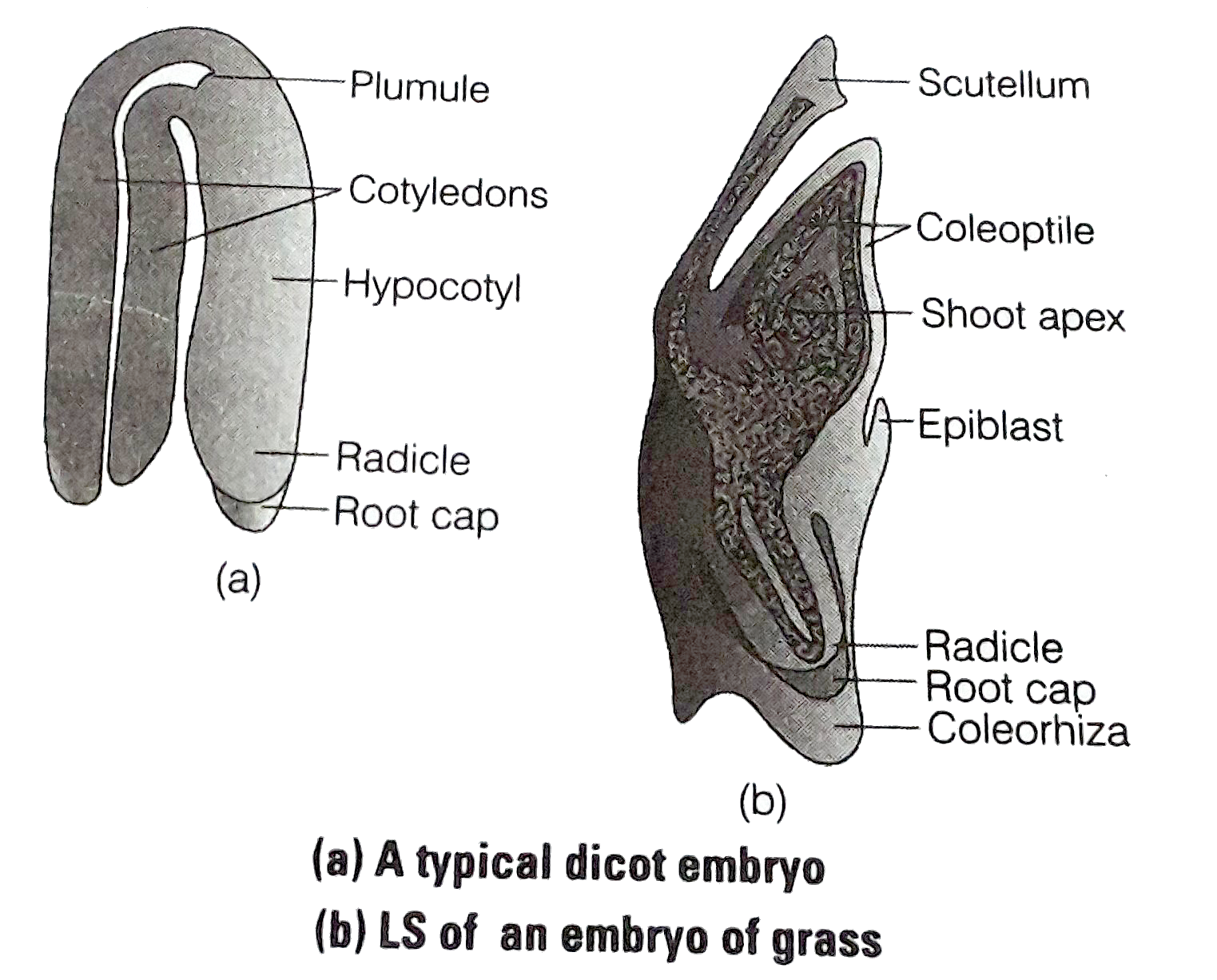In the embryos of a typical dicot and a grass, true homologous structures are
A
coleorrhiza and coleoptile
B
coleoptile and scutellum
C
cotyledons and scutellum
D
hypocotyl and radicle
Video Solution
Text Solution
The correct Answer is:C
A typical dicotyledonous embry consists of two cotyledons. While, embryos of monocotyledons possess only one cotyledon and it is called scutellum ( in grass ).

|
Updated on:21/07/2023
Topper's Solved these Questions
Similar Questions
Knowledge Check
- Question 1 - Select One
The homologous structures are
AAnatomically differentBFunctionally different, evolved from different ancestorsCFunctionally sameDAnatomically, same but perform different functions. - Question 2 - Select One
Homologous structures have
Adissimilar origin and dissimilar functionsBdissimilar origin but similar functionsCsimilar origin but similar or dissimilar functionsDdissimilar origin and dissimilar structure - Question 3 - Select One
Example of homologous structures is/are
AOptic lobes of brainBHeart of vertebratesCCerebrum of brainDAll of the above
Example of homologous structure is / are :
View SolutionHomologous structures are a result of
View SolutionWhich of the following are homologous structures ?
View SolutionIn an embryo sac of a typical angiosperm there are
View SolutionWhich of the following is true w.r.t homologous structures?
View Solution

